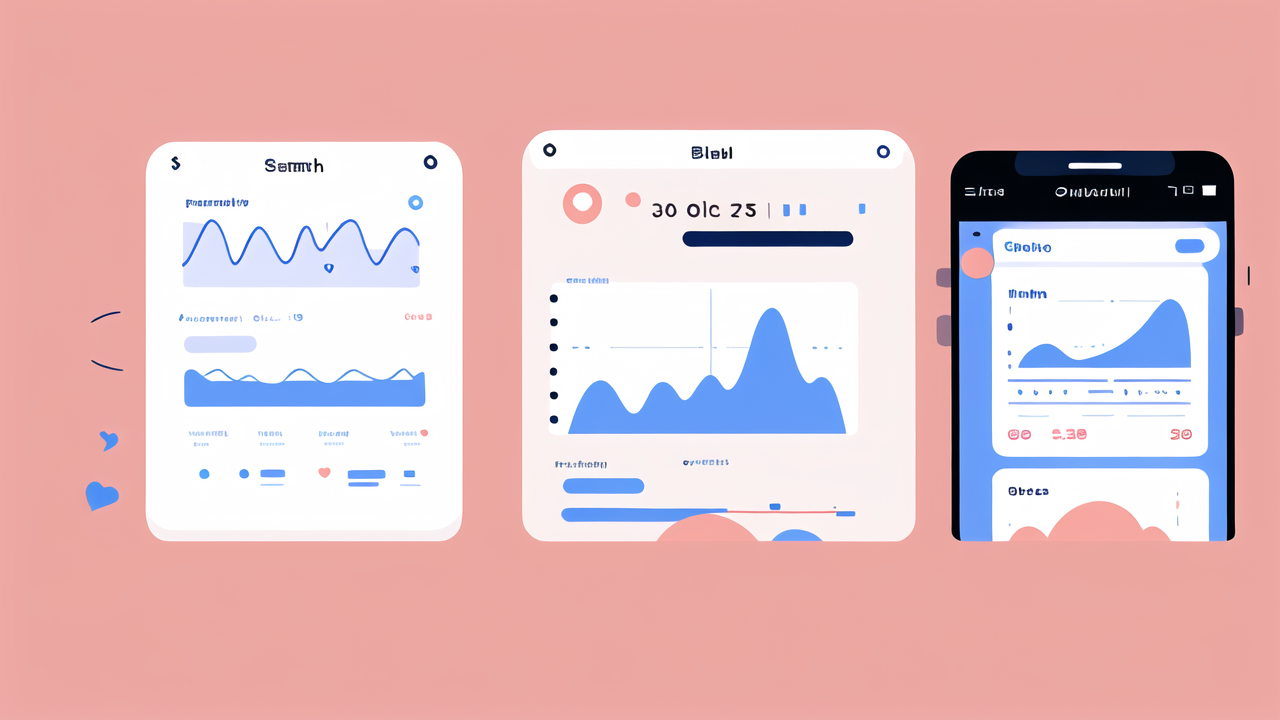Understanding the Rise of Smart Watches in the Wearable Market
The Evolution of Smart Watch Adoption in the United States
Smart watches have come a long way since their inception. In the US, adoption has soared in recent years. Early models were clunky and limited in function. Now, they're sleek and packed with features.

The rise began with fitness trackers. These simple devices paved the way for more advanced wearables. As technology improved, so did consumer interest. Smart watches now offer everything from health monitoring to mobile payments.
Key factors driving adoption include:
- Improved battery life
- More accurate sensors
- Wider app ecosystems
- Better integration with smartphones
Today, smart watches are no longer just for tech enthusiasts. They've become mainstream accessories for all ages.
Analyzing Market Leaders: Who's Wearing What?
The smart watch market is dominated by a few key players. Apple leads the pack with its Apple Watch series. Samsung and Fitbit follow closely behind. Other brands like Garmin and Fossil cater to specific niches.
Apple's success comes from its seamless integration with iPhones. Samsung offers versatility with its Galaxy Watch line. Fitbit focuses on fitness and wellness features.
Market share breakdown:
- Apple: 36%
- Samsung: 11%
- Fitbit: 9%
- Others: 44%
Each brand has its strengths. Apple excels in user experience. Samsung offers Android compatibility. Fitbit leads in health tracking. Newer entrants like the Fila smart watch aim to carve out their own space.
How Smart Watches are Changing Consumer Behavior
Smart watches are reshaping how we interact with technology. They've become extensions of our smartphones. Users now check their wrists for notifications, not their pockets.
Health and fitness tracking has seen a major boost. People are more aware of their daily activity and sleep patterns. This leads to healthier lifestyle choices.
Smart watches also influence:
- Payment habits (contactless payments)
- Communication (quick replies to messages)
- Time management (calendar alerts and reminders)
As these devices evolve, they'll continue to shape our daily routines and habits.
Body Measurement Technologies and their Impact on the Wearable Industry
Innovations in Health and Wellness Features
Body measurement tech is revolutionizing wearables. Smart watches now offer more than just step counting. They're becoming personal health assistants.

New features include:
- Heart rate variability monitoring
- Blood oxygen level tracking
- ECG readings
- Stress level detection
These advancements make smart watches valuable tools for health management. Users can track trends and share data with healthcare providers. This leads to more proactive health decisions.
Some watches even offer menstrual cycle tracking and fertility predictions. This expands their appeal to a wider audience.
The Role of Sensors in Advanced Measurements
Sensors are the unsung heroes of smart watch technology. They've become more sophisticated and accurate. This allows for more detailed body measurements.
Key sensors include:
- Accelerometers for motion tracking
- Optical sensors for heart rate monitoring
- Bioimpedance sensors for body composition analysis
- Temperature sensors for skin temperature readings
These sensors work together to provide a comprehensive health picture. They can detect changes in the body that might indicate health issues. This early warning system is a game-changer for preventive healthcare.
Data Analysis: Enhancing User Experience with Smart Watches
Smart watches collect vast amounts of data. But it's the analysis of this data that provides real value. Advanced algorithms turn raw numbers into actionable insights.
Users benefit from:
- Personalized fitness recommendations
- Sleep quality assessments
- Stress management tips
- Activity trend analysis
This data-driven approach enhances the overall user experience. It makes smart watches more than just gadgets. They become personal health coaches and lifestyle advisors.
Integrating Smart Watches with Body Measurement Technologies: The Next Frontier
Case Studies: Successful Integrations and Market Response
Several companies have successfully merged smart watches with advanced body measurement tech. These case studies show the potential of this integration.

Apple's ECG feature:
- Launched in 2018
- Helps detect atrial fibrillation
- Received FDA clearance
- Led to increased sales and user satisfaction
Fitbit's stress management tools:
- Combines heart rate variability and skin temperature data
- Provides stress scores and relaxation exercises
- Well-received by users seeking mental health support
Samsung's body composition analysis:
- Uses bioelectrical impedance analysis
- Measures body fat percentage, muscle mass, and water retention
- Offers a more comprehensive fitness tracking experience
These examples demonstrate the market's appetite for more advanced health features in wearables.
Technological Challenges and Solutions for Wearables
Integrating body measurement tech into smart watches isn't without challenges. Developers face several hurdles:
- Battery life constraints
- Accuracy of sensors in diverse conditions
- Data privacy and security concerns
- Regulatory compliance for health-related features
Solutions being explored include:
- More efficient processors and batteries
- Machine learning for improved sensor accuracy
- Enhanced encryption and user control over data
- Collaboration with health authorities for faster approvals
Overcoming these challenges is crucial for the next generation of wearables.
The Future Landscape: Predicting Industry Trends and Consumer Expectations
The future of wearables looks promising. As smart watches and body measurement tech converge, we can expect:
- More non-invasive health monitoring features
- Increased focus on mental health and stress management
- Better integration with healthcare systems
- Customizable health and fitness plans based on individual data
Consumers will likely demand:
- Longer battery life
- More accurate health measurements
- Sleeker designs
- Seamless integration with other smart devices
The line between medical devices and consumer wearables may blur. This could lead to new regulatory challenges and opportunities.
As technology advances, smart watches may become essential health management tools. They could play a key role in preventive healthcare and personalized medicine.
The wearable market is set for exciting developments. Companies like Fila with their smart watch offerings will need to innovate to stay competitive. The future belongs to those who can best combine form, function, and advanced health features.




Leave a comment
This site is protected by hCaptcha and the hCaptcha Privacy Policy and Terms of Service apply.